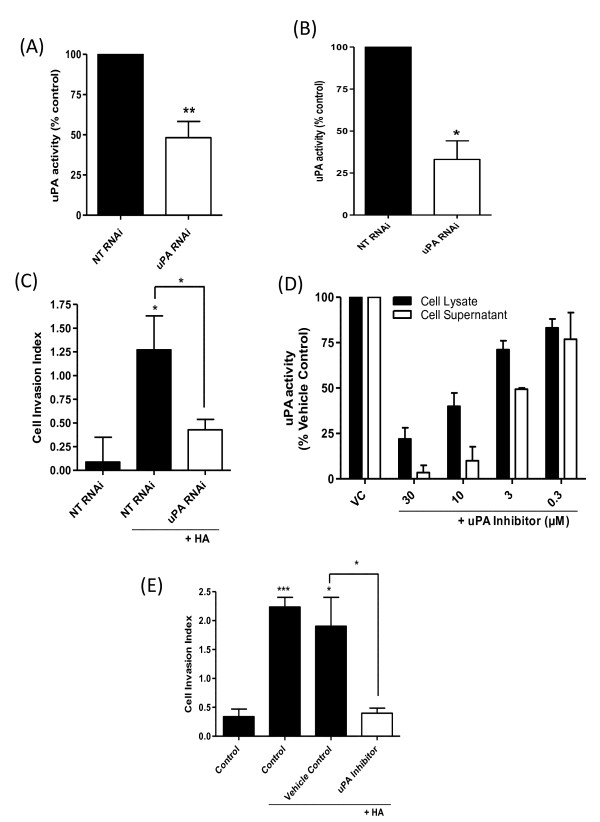Figure 4.
Downregulation of uPA activity attenuates the HA-promoted invasion of CD44-enriched invasive breast cancer cells. RNAi-mediated reduction of uPA expression in MDA-MB-231Hi cells resulted in a decrease in (A) cell-surface uPA activity to 64.9% ± 10.8% of control NT RNAi-transfected cells (P < 0.01; n = 3) and (B) secreted uPA to 33.1% ± 11.1% of control NT RNAi-transfected cells (P < 0.05; n = 3). (C) Bar graph illustrating the HA-promoted invasion of MDA-MB-231 NT cells through Matrigel over a 12-hour period, in the absence and presence of a uPA-targeting siRNA. HA (100 μg/ml) increased the cell-invasion index to 1.27 ± 0.36 (P < 0.05); however, this was attenuated by transfection with the uPA RNAi SMARTPool (cell invasion index of 0.43 ± 0.1; P < 0.05 relative to HA alone; n = 4). (D) Bar graph presenting the effects of administering an uPA inhibitor on uPA activity detected in MDA-MB-231Hi cells. (E) Bar graph illustrating the HA-promoted invasion of MDA-MB-231Hi cells in the absence and presence of a uPA inhibitor. HA increased MDA-MB-231Hi cell invasion through Matrigel over a 36-hour period to a mean cell index of 2.24 ± 0.2 (P < 0.001 relative to control cells). Treatment with the uPA inhibitor (30 μM) reduced the HA-promoted cell-invasion index to 0.4 ± 0.09 (P < 0.05 relative to vehicle control; n = 3). Statistically significant differences were determined by using a Student two-tailed t test (*P < 0.05; **P < 0.01; ***P < 0.001).

